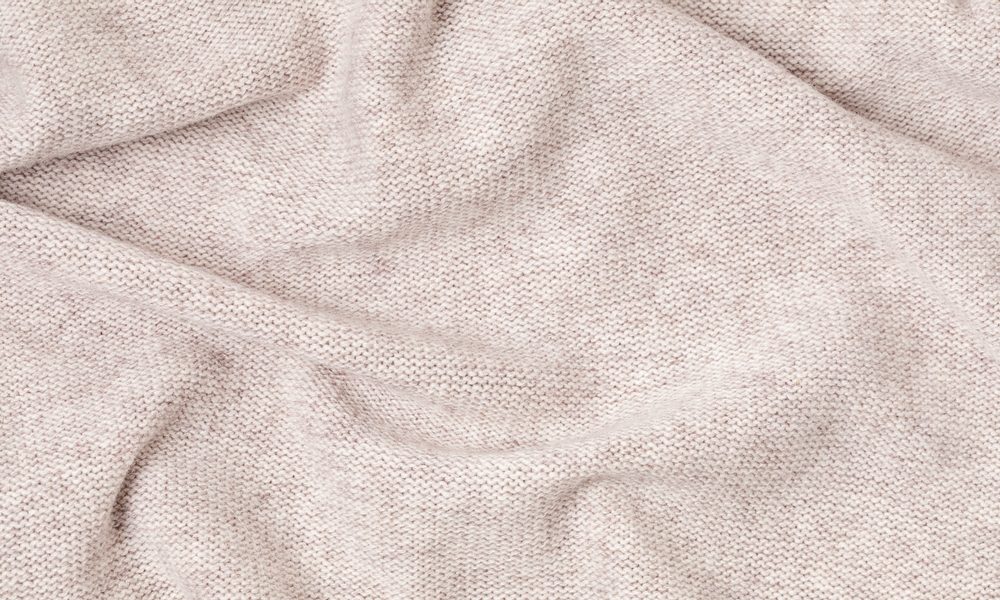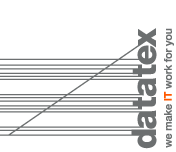
Sustainable Cashmere PGI. The Como – Mongolia Joint Venture
Interview with Francesco Saldarini
FRANCESCO SALDARINI – Fifth-generation textile entrepreneur from Como and inventor of the patented “Cashmere Flakes” padding, Francesco Saldarini is a partner in MNFPUGs Sustainable Cashmere S.r.l., a company formed in June 2022 from a joint venture between the Saldarini family and the Mongolian National Federation of Pasture User Groups of herders.
The “Sustainable Cashmere of Mongolia” project, which in January 2023 received the green light from the European Union for the process of granting PGI certification, stems from an agreement you signed with the Mongolian herders’ union, which represents 93 thousand households and more than 1,750 herders’ cooperatives, accounting for 70 percent of Mongolian herders. The goal of this innovative project is to create direct contact-skipping the intermediation of Chinese traders-between European fashion and luxury brands and Mongolian cashmere producers. What are the concrete benefits for European companies on the one hand and Mongolian farmers on the other?
The business model we propose is win-win.
As far as Mongolian breeders are concerned, the benefits involve both the immediate economic aspect and the aspect of environmental and social sustainability. In fact, the Sustainable Cashmere of Mongolia project – which increases producers’ earnings by about 15 percent compared to the current model – allows farmers to sell directly to Europe, skipping the costly mediation of Chinese traders, and at the same time puts in place several interventions in Mongolia with social and environmental purposes, introducing more efficient pasture rotation systems and minimizing the negative impact of climate change.
On the other hand, as far as European textile-fashion companies are concerned, from the business point of view, the advantage is to be able to have – without any increase in the cost of buying cashmere – an important return in terms of storytelling and branding, a return linked not to the usual Greenwashing operations (we have seen far too many of them in recent years…) but to concrete participation in a sustainable and virtuous textile supply chain project that is real and fully documented and verifiable.
The “Sustainable Cashmere of Mongolia” project is precisely an important attempt to create an environmentally sustainable and transparent supply chain, which is also ensured by the use of a blockchain traceability system. How does this kind of traceability work and what benefits does it offer consumers?
Of purely formal certifications and façade eco-sustainable projects there are countless, in textiles as in other sectors. What makes the difference is the possibility for the consumer to easily verify whether we are talking about a real project or a simple communication and marketing operation.
In our case, this possibility of verification is made extremely simple and immediate thanks to the use of the blockchain and the presence – on the label associated with the garment being purchased – of a QR Code that simply needs to be framed with the camera of the smartphone to obtain in a few seconds all the detailed information about the precise and exact farm from which the yarn used to produce the garment (for example, the sweater) originates. The QR Code gives access to a database with information and images about the nomadic Mongolian herding family from which the yarn originated, thus enabling true and total traceability.
To what extent was and is the Sustainable Cashmere of Mongolia project supported by private and public entities and trade associations? What interest is it generating in the market?
On the private side, the investments have come from me and my family, while the public entities that are supporting the project are many, and include the European Union (which has allocated more than 10 million euros to the project), Switzerland (which has invested 136 million francs), FAO, Mongolia, Italy, and the United States.
The Sustainable Cashmere of Mongolia project, which is expected to be awarded PGI certification by the European Union soon, began about nineteen years ago, has required a lot of work and significant investment, and has already won several international awards and recognition, starting with recognition at Expo 2015 as the World’s Best Sustainable Development Project.
Interest in the market is enormous, and all major international luxury and high-end textile groups-no one excluded-are showing great appreciation for the project.
The textile sector is going through a complex phase, amidst the impact of Covid, global supply chain crises, exploding transportation and production costs, energy shocks, technological innovations, and the green revolution. How do you think the sector will evolve in the coming years, and where does the evolution – which has already been underway for years-to a more environmentally sustainable and virtuous textile – fashion system stand today?
In the fashion world, the model that has dominated for decades today is no longer sustainable, because it involves too much waste and because it is too polluting. In recent years things are finally changing and we are moving toward a textile-fashion model that is definitely better, although there is still a long way to go. When it comes to eco-sustainability I still see too many self-certifications and too many pure marketing operations without any real substance. The difference between real and fake sustainability – I repeat – is whether the consumer can check whether what he or she is being told is actual and ascertainable or is a bunch of nice but made-up words.
ITA
Cashmere sostenibile IGP. La Joint Venture Como – Mongolia
Intervista a Francesco Saldarini
FRANCESCO SALDARINI – Imprenditore tessile italiano di Como alla quinta generazione, inventore dell’imbottitura brevettata “Cashmere Flakes”, Francesco Saldarini è socio di MNFPUGs Sustainable Cashmere S.r.l., società nata del giugno del 2022 grazie a una joint venture tra la famiglia Saldarini e il Sindacato Mongolian National Federation of Pasture User Groups of herders.
Il progetto “Sustainable Cashmere of Mongolia”, che a gennaio 2023 ha ricevuto dall’Unione Europea il via libera per il procedimento di concessione della certificazione IGP, nasce da un accordo che avete sottoscritto con il sindacato degli allevatori della Mongolia, che rappresenta 93mila nuclei familiari e oltre 1.750 cooperative di allevatori, pari al 70% dei pastori mongoli. Obbiettivo di questo progetto innovativo è di creare un contatto diretto – saltando l’intermediazione dei traders cinesi – tra i brand europei della moda e del lusso e i produttori di cashmere della Mongolia. Quali sono in concreto i vantaggi per le aziende europee da una parte e per gli allevatori della Mongolia dall’altra?
Il modello di business che proponiamo è win-win.
Per quanto riguarda gli allevatori mongoli i vantaggi riguardano sia l’aspetto immediatamente economico sia l’aspetto della sostenibilità ambientale e sociale. Il progetto “Sustainable Cashmere of Mongolia” – che incrementa del 15% circa il guadagno dei produttori rispetto al modello attuale – consente infatti agli allevatori di vendere direttamente in Europa saltando la costosa mediazione dei traders cinesi, e al tempo stesso mette in atto in Mongolia diversi interventi con finalità sociali e ambientali, introducendo sistemi più efficienti di rotazione dei pascoli e minimizzando l’impatto negativo del cambiamento climatico.
Per quanto riguarda invece le aziende europee del settore tessile-moda, dal punto di vista del business il vantaggio è quello di poter avere – senza nessun aumento dei costi per l’acquisto del cashmere – un importante ritorno in termini di storytelling e di branding, un ritorno legato non alle solite operazioni di Greenwashing (ne abbiamo viste fin troppe negli ultimi anni…) ma alla partecipazione concreta a un progetto di filiera tessile sostenibile e virtuosa che è reale e pienamente documentato e verificabile.
Il progetto “Sustainable Cashmere of Mongolia” è appunto un tentativo importante di dare vita a una filiera ecosostenibile e trasparente, assicurata anche dall’utilizzo di un sistema di tracciabilità in blockchain. Come funziona e che vantaggi offre ai consumatori questo tipo di tracciabilità?
Di certificazioni puramente formali e di progetti ecosostenibili di facciata ce ne sono innumerevoli, nel tessile come in altri settori. La differenza la fa la possibilità, per il consumatore, di verificare facilmente se stiamo parlando di un progetto vero o di una semplice operazione di comunicazione e di marketing.
Nel nostro caso questa possibilità di verifica è resa estremamente semplice e immediata grazie all’utilizzo della blockchain e alla presenza – sull’etichetta associata al capo che viene acquistato – di un QR Code che va semplicemente inquadrato con la fotocamera dello smartphone per ottenere in pochi secondi tutte le informazioni dettagliate sul preciso ed esatto allevamento da cui trae origine il filato che è servito per produrre il capo (per esempio il maglione). Il QR Code dà accesso a un database con informazioni e immagini relative alla famiglia di pastori nomadi mongoli dal quale proviene il filato, consentendo in questo modo una tracciabilità vera e totale.
In che misura il progetto “Sustainable Cashmere of Mongolia” è stato ed è sostenuto da enti privati e pubblici e da associazioni di categoria? Che interesse sta suscitando sul mercato?
Per quanto riguarda i privati gli investimenti sono arrivati da me e dalla mia famiglia, mentre gli enti pubblici che stanno sostenendo il progetto sono molti, e comprendono l’Unione Europea (che ha stanziato oltre 10 milioni di euro per il progetto), la Svizzera (che ha investito 136 milioni di franchi), la FAO, la Mongolia, l’Italia e gli Stati Uniti.
Il progetto “Sustainable Cashmere of Mongolia”, che dovrebbe ottenere a breve la certificazione IGP da parte dell’Unione Europea, è iniziato circa diciannove anni fa, ha richiesto un lungo lavoro e importanti investimenti e ha già ottenuto diversi premi e riconoscimenti internazionali, a partire dal riconoscimento all’Expo 2015 come Miglior Progetto di Sviluppo Sostenibile a livello mondiale.
L’interesse sul mercato è enorme e tutti i più importanti gruppi internazionale del lusso e del tessile di fascia alta – nessuno escluso – stanno mostrando grande apprezzamento per il progetto.
Il settore tessile sta attraversando una fase complessa, tra impatto del Covid, crisi delle supply chain globali, esplosione dei costi di trasporto e di produzione, shock energetico, innovazioni tecnologiche e rivoluzione green. In che modo secondo lei si evolverà il settore nei prossimi anni e a che punto è oggi l’evoluzione – che è già in corso da anni – verso un sistema tessile-moda maggiormente ecosostenibile e virtuoso?
Nel mondo del fashion il modello che ha dominato per decenni oggi non è più sostenibile, perché comporta troppi sprechi e perché è troppo inquinante. Negli ultimi anni le cose stanno finalmente cambiando e ci stiamo muovendo verso un modello tessile-moda sicuramente migliore, anche se la strada da percorrere è ancora lunga. Quando si parla di ecosostenibilità vedo ancora oggi troppe autocertificazioni e troppe operazioni di marketing puro senza alcuna sostanza reale. La differenza tra la sostenibilità vera e quella finta – lo ripeto – la fa la possibilità per il consumatore di controllare se quello che gli viene raccontato è effettivo e accertabile oppure è un insieme di parole belle ma inventate a tavolino.

